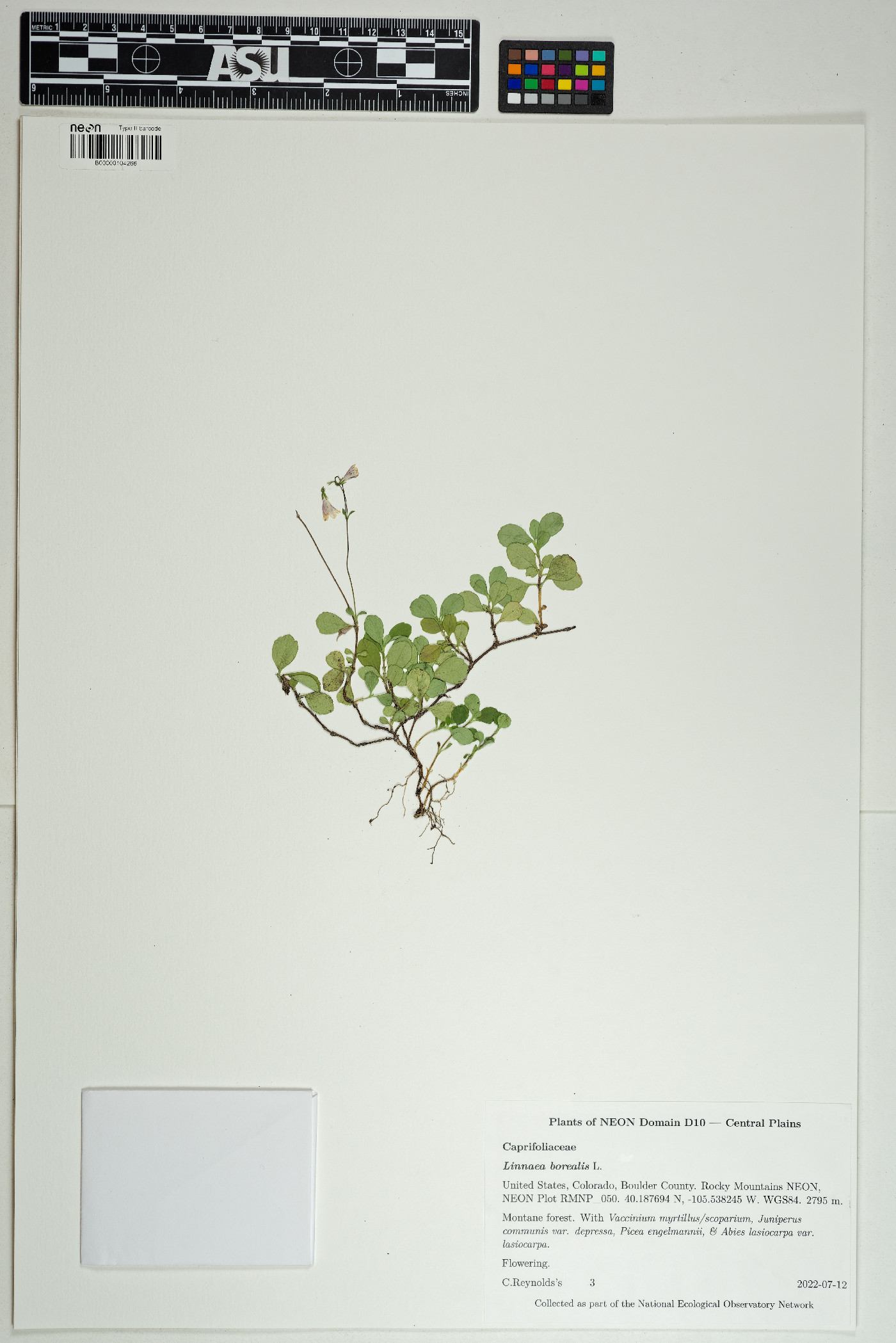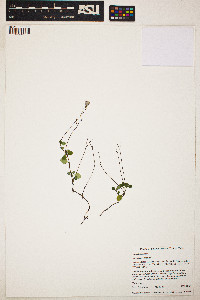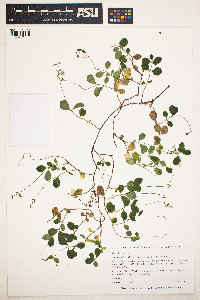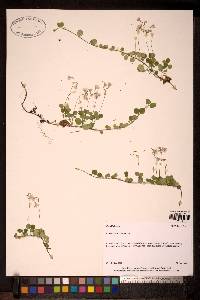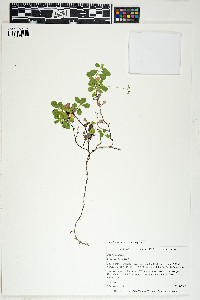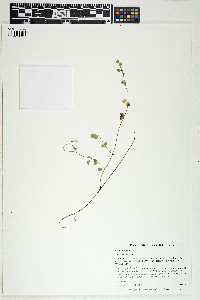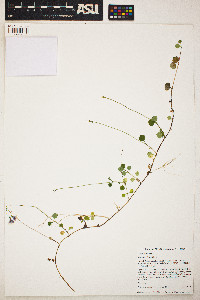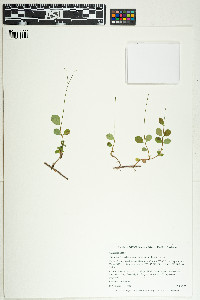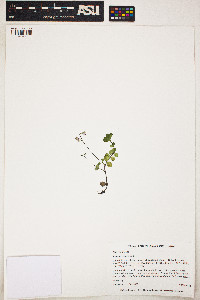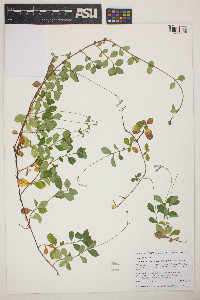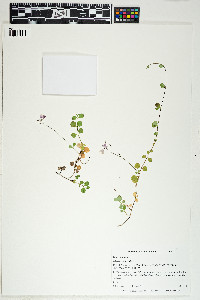- Home
- Search
- Images
- Datasets
- Sample Use
- How to Cite
- Additional Information
- About NEON
- NEON Data Portal
- ASU Biocollections
- About Symbiota
|
|
|
|
Family: Caprifoliaceae
longtube twinflower, more...longtube twinflower, twinflower, twinflower
[Linnaea americana Forbes, moreLinnaea borealis subsp. americana (J.Forbes) Hultén, Linnaea borealis subsp. longiflora (Torr.) Piper & Beattie, Linnaea borealis var. americana (J.Forbes) Rehder, Linnaea borealis var. longiflora Torr.] |
Trailing and creeping herb to 10 cm tall Stem: hairy, with short, slightly upright branches. Leaves: evergreen, low on flower stalks, opposite, short-stalked, light green, 1 - 2.5 cm long, about 1.5 cm wide, broadly oval to egg-shaped with narrowing base and rounded tip, toothed, and firm. Flowers: paired, long-stalked, nodding, fragrant, borne terminally at branch tips. Calyx five-lobed. Corolla pinkish white, 1 - 1.5 cm long, bell-shaped, shallowly five-lobed, hairy within. Stamens four. Fruit: a small, dry, one-seeded, indehiscent capsule. Similar species: No information at this time. Flowering: June to August Habitat and ecology: Very rare in the Chicago Region, having been extirpated in Illinois and Lake and Porter counties in Indiana. It is found in dry to moist bogs and forests. Occurence in the Chicago region: native Notes: This is the American variety of the European plant. Etymology: Linnaea is named after Carl von Linne (1707-1778), the Swedish botanist universally known as Linnaeus, and often referred to as the Father of Taxonomy. Borealis means "from the North." Americana means "of the Americas." Author: The Morton Arboretum Stems trailing and creeping, emitting numerous short, suberect, leafy branches to 10 cm, these with a slender terminal peduncle to 10 cm; lvs firm, short-petioled, broadly oval to obovate, 1-2 cm; fls nodding; cor pink to white, 10-15 mm, shallowly 5-lobed, flaring from near the top of the cal, hairy inside; 2n=32. Moist or dry woods and cold bogs; circumpolar, s. in Amer. to N.J., W.Va., n. Ind., Minn., and Calif. June-Aug. Our plants are var. longiflora Torr. (L. americana) Gleason, Henry A. & Cronquist, Arthur J. 1991. Manual of vascular plants of northeastern United States and adjacent Canada. lxxv + 910 pp. ©The New York Botanical Garden. All rights reserved. Used by permission. General: Evergreen dwarf subshrub, prostrate with a creeping or trailing habit, 0.1-1 m (0.3-3 ft) long, rooting at nodes; stems moderately to sparsely hairy and often glandular, becoming glabrous with maturity; flowering stems erect to ascending, mostly 1-15 cm long. Leaves: Opposite, simple, elliptic to obovate or orbicular, 0.5-2 cm long, 0.3-1.5 cm wide, light green to yellowish green, glabrous or somewhat long-hairy along veins and margins, margins slightly toothed above the middle or entire; petiole short, 0.2-0.4 cm. Flowers: Paired, nodding, borne on a long, forked peduncle subtended by 2 bracts; calyx lobes 5, lance-shaped, 2-5 mm long; corolla bell- to funnel-shaped, 5-lobed, 0.8-1.5 cm long, white, tinged with pink, pubescent within; stamens 4, of unequal lengths. Fruits: Indehiscent capsule, ovoid, 3-locular, 1.5-3 mm long, dry; seed 1. Ecology: Found in dense coniferous forests from 6,000-10,000 ft (1829-3048 m), flowers June-September. Distribution: Apache County (White Mountains), Coconino County (Kaibab Plateau); most of North America, circumpolar distribution. Notes: Twin-flower is killed by fire. It reproduces vegetatively by stolons, and seeds are dispersed by attaching to animals. Ethnobotany: Tribes from other regions use the mashed plant as a poultice for inflammation of limbs and for headache. Editor: Springer et al. 2011 |


